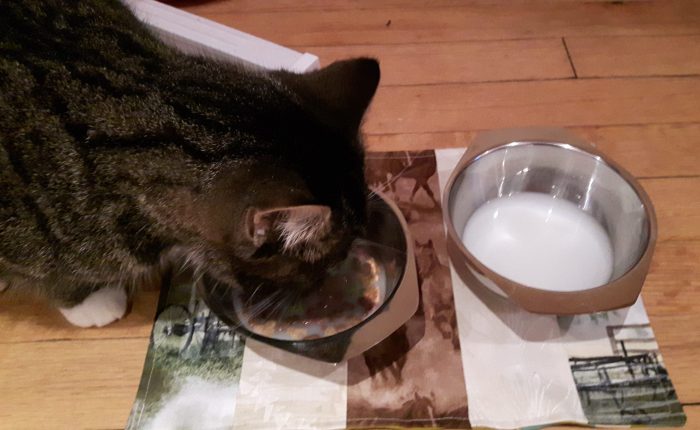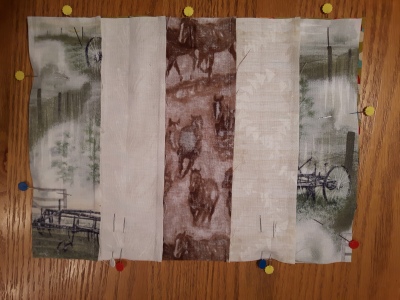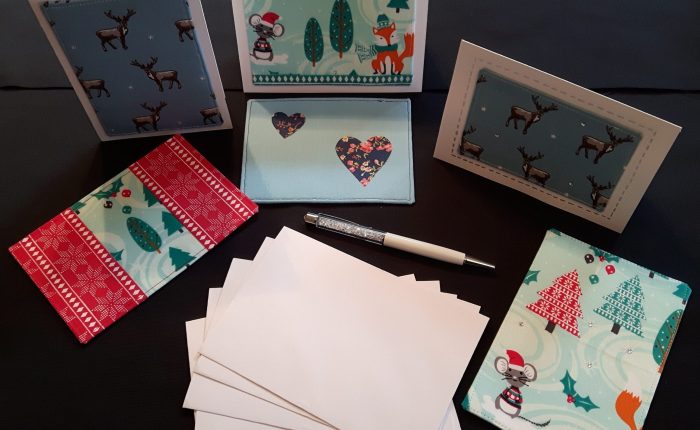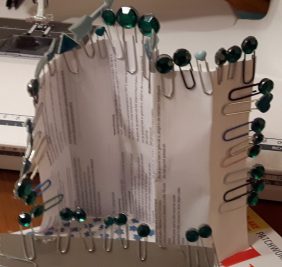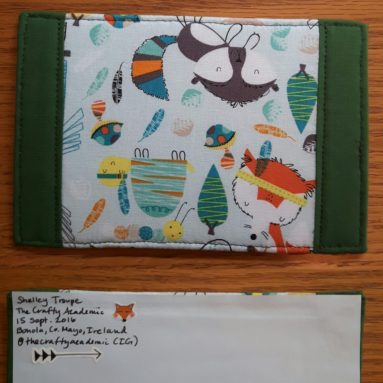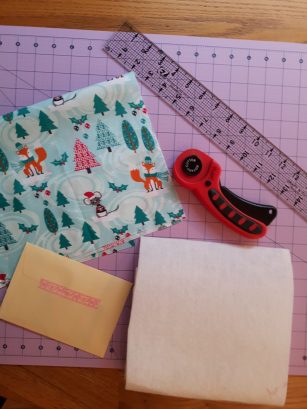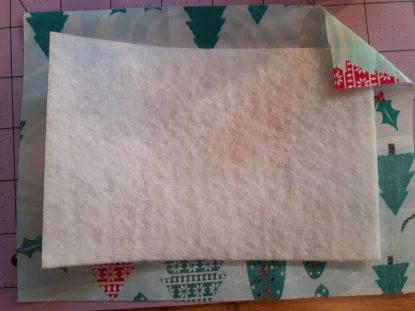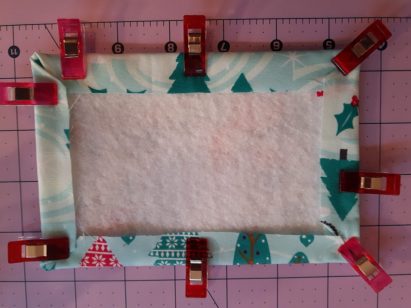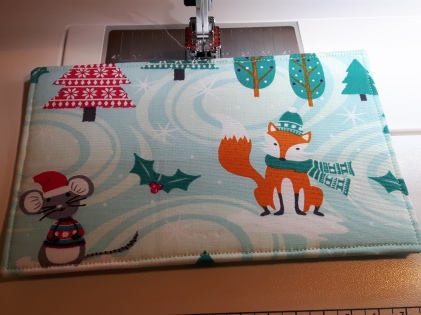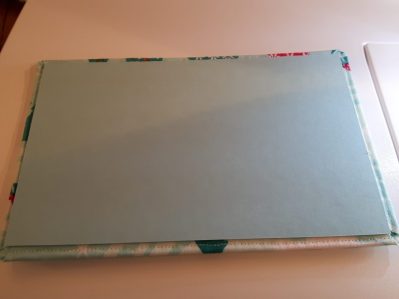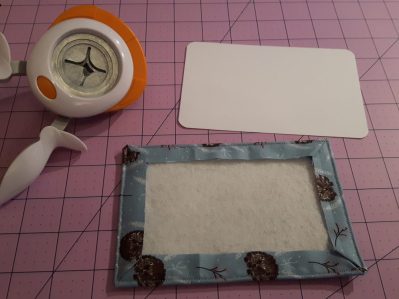If you like sewing and crafting, you should definitely check out Whitney Edwards’ YouTube channel, Whitney Sews. Her tutorials run the gamut. You can find everything from tote bags (lined and unlined!) to costumes to zippered pouches to baby and toddler wear to quilts (and much more!). There is a family feel to her channel, which is heightened when her mom and children make guest appearances! (We’ve also been treated to a rare shot of her husband.) That warm feeling filters through to her tutorials in which she gives clear instructions to beginning and advanced sewers.
Recognising the enormous stashes of fabrics and notions that sewers accumulate, Whitney recently challenged herself (and us, her subscribers) to sew our stash during 2017 instead of purchasing new bits and bobs. You’ll find that video here. For the past week or sew (pun totally intended!), I have enjoyed seeing how people from around the world are meeting the challenge, and I’ve done a few bits as well including making more fabric cards. (Want to make some yourself? You find instructions in my last blog post.)
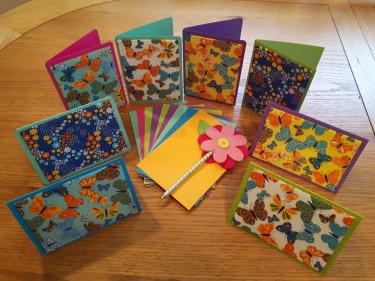
The pet placemat is inspired by this little stinkpot, Lulu, who showed up a few weeks before my brain surgery. (It wouldn’t be one of my blog posts if I didn’t bring it up. What can I say? I cannot believe they guntered around in my noggin and I lived to tell the tale!) She made a great kitty companion during my recovery.
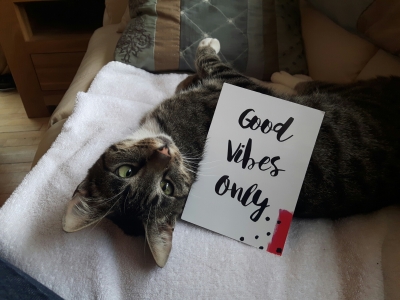
After her arrival, we gave Lulu two of our good stainless steel bowls, and set them on a folded piece of paper towel. Trés chic! Needless to say, I had been wanting to gussy up the joint for a while.
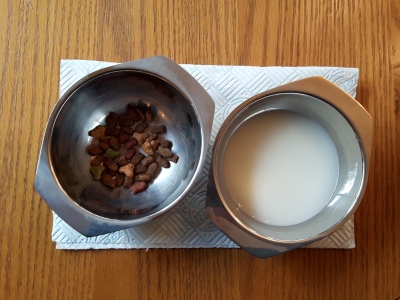
The Crafty Academic’s Pet Placemat Tutorial
I guarantee that you won’t need to buy anything to make this placemat. As a matter of fact, knowing the amount of fabric that sewers collect, you’ll probably be able to make 10 without putting a huge dent in your stash! (Oh drat! That’s the whole point, isn’t it? Maybe you better make 25 and give them away or sell them at a craft fair.)
What you need
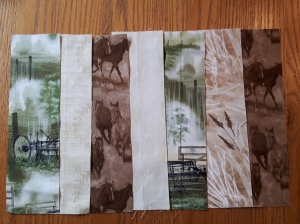
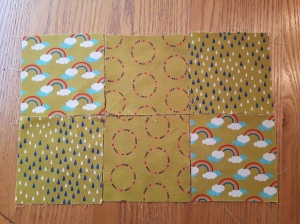
* Fabric for the front and back of the placemat.
With Whitney’s Sew Your Stash Challenge in mind, I raided my stash and found these fabrics. The country fabrics on the left were left over strips (approximately 3 inches wide) from a quilt top I made for Mr. Crafty Academic who is a farmer. The 5-inch squares on the right were leftovers from a charm pack. The measurements are up to you. I used the paper towel as a guideline, but I knew I wanted to make it a little bigger. My finished placemat is 11.75in x 8.5in (30cm x 21.5cm). The front doesn’t match the back, but that doesn’t bother me one bit. It’s truly reversible!
* Sewing machine or hand needle
* Thread
* If you want to make a patchwork placemat like mine and your scraps aren’t small enough, you will need a rotary cutter and self-healing mat (or plain, old scissors) to make your own strips and squares.
* Scissors
* Pins
What you do
Sew your strips and squares together using a 1/4in (1/2cm) seam allowance. (Notice that I used only five of the seven original strips. I did that so that the width of the placemat was closer in size to that of the squares after I had sewn them together.) Place the pretty sides of the fabric together and pin around the edges. Using a 1/4in (1/2cm) seam allowance, sew around the outside of the placemat. Make sure to leave a gap so you can turn it right side out after you sew. (My gap is marked above by the sets of two pins on the bottom of the placemat.)
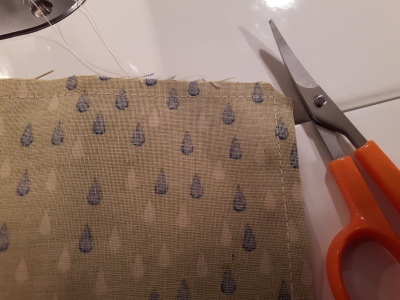
After sewing the front and back together, clip the corners (but don’t clip your seam line!) to reduce bulk, which helps make the corners sharp and crisp after you turn it right side out.
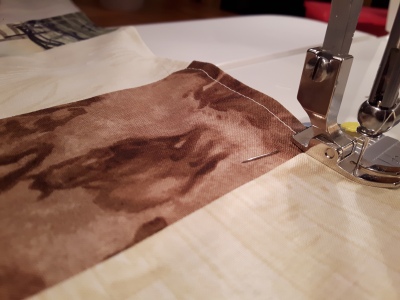
Once you have the placemat turned right sides out, give it a press and topstitch around the perimeter about 1/4in (1/2cm) to give it a finished look. (I also ran two lines of stitching on the left and right of the middle strip (with the horses on it) to secure the pieces together. You can see them best on the back of the placemat, which is shown in the right-hand photo below.)
Voilà!! You’re done!
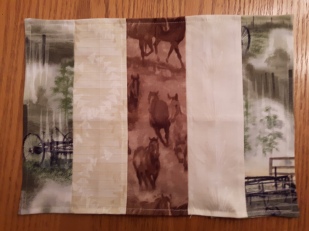
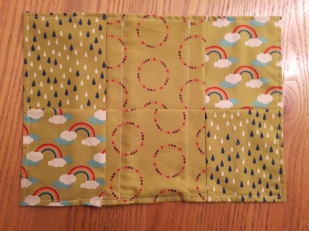
If you make your own pet placemat, please share your work with me using the social media links on this page, and let me know if you have a specific project that you’d like me to do a tutorial on in the future.
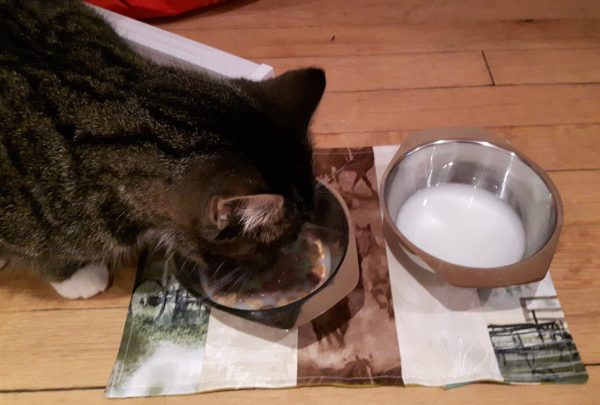
The placemat in action. It’s Lulu-approved!
